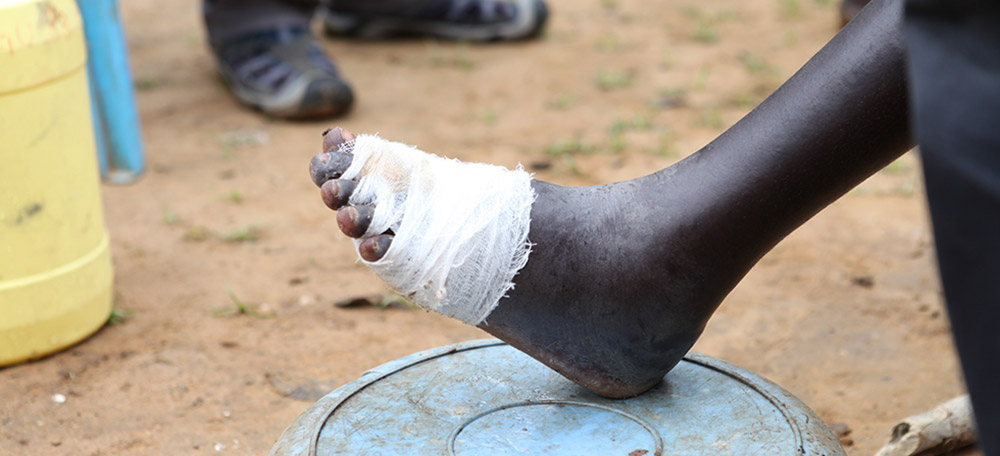Dracunculiasis (guinea worm disease)

 Click to enlargeDracunculiasis, otherwise known as guinea-worm disease, is caused by the parasitic worm Dracunculus medinensis or "Guinea-worm". It is transmitted mostly through parasite-infected water-fleas found in contaminated stagnant waters. It is mainly found in remote rural areas where people heavily rely on open water sources.
Click to enlargeDracunculiasis, otherwise known as guinea-worm disease, is caused by the parasitic worm Dracunculus medinensis or "Guinea-worm". It is transmitted mostly through parasite-infected water-fleas found in contaminated stagnant waters. It is mainly found in remote rural areas where people heavily rely on open water sources.
The disease, while not fatal, can become crippling when the worm emerges from painful blisters, usually in the lower limbs.
To date, Sudan is the only country in the Eastern Mediterranean Region where eradication has not been certified.
The neglected tropical diseases draft roadmap "Ending the neglect to attain the Sustainable Development Goals: a road map for neglected tropical diseases 2021–2030", targets global eradication1 for 2030.
1 To be declared free of dracunculiasis, a country is required to have reported zero instances of transmission and maintained active surveillance for at least 3 consecutive years. After which, an international certification team carries out a country review and submits a report to the International Commission for the Certification of Dracunculiasis Eradication for evaluation.


